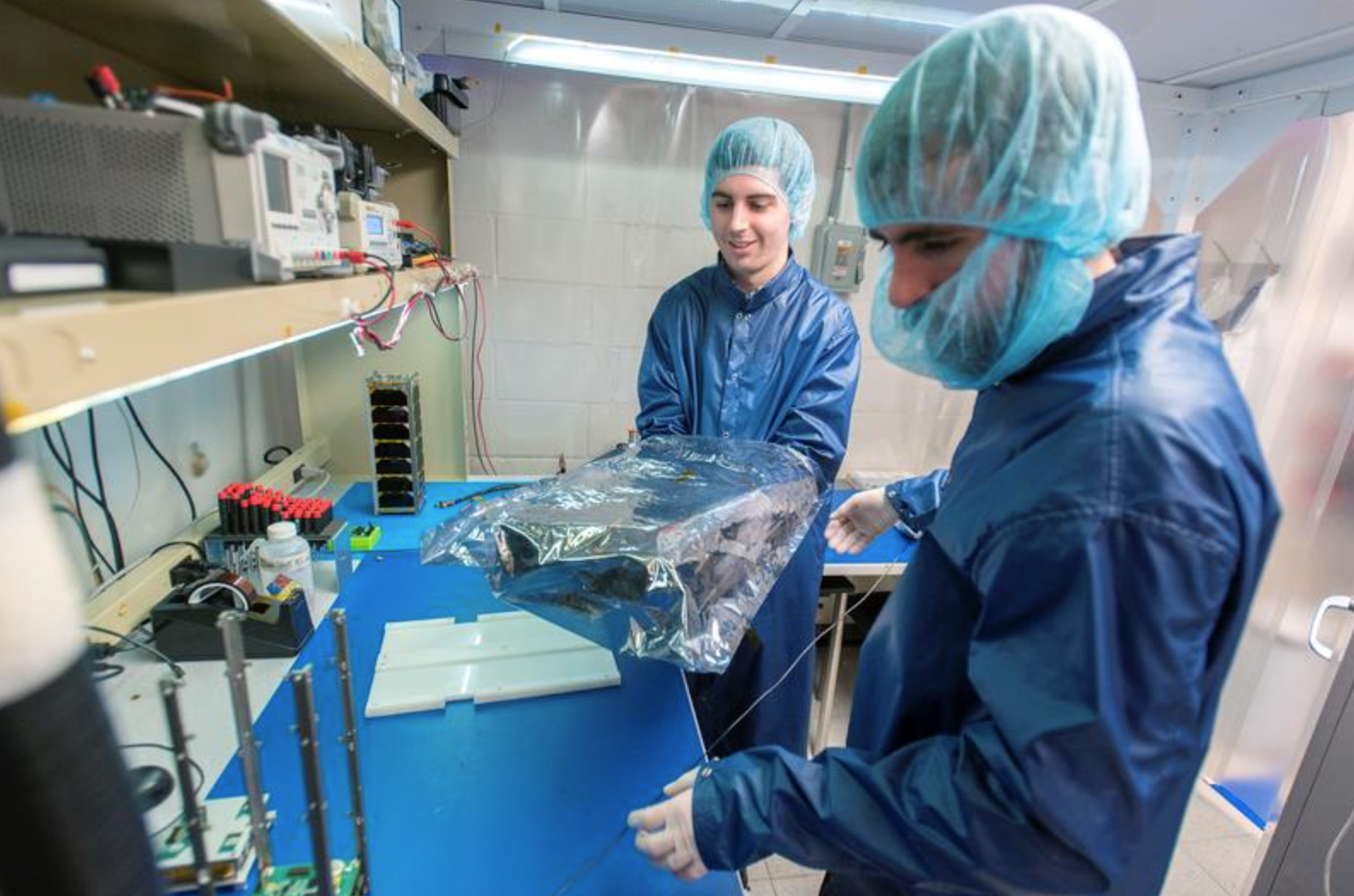The EnterpriseWorks graduate, CU Aerospace, launched their satellite into space for the first time on December 12, 2018. Over a decade in the making, CU Aerospace along with University of Illinois engineering students developed the small CubeSail satellite. At 10PM, this satellite launched from New Zealand, hitching a ride on the Electron rocket from the commercial space company, Rocket Lab. This technology was developed when CU Aerospace lived inside the EnterpriseWorks incubator at the University of Illinois Research Park.
Considered extremely unique in its field, CubeSail has a new technique for steering a “solar sail” with a solar-powered satellite propulsion system. In 2005, David Carroll of CU Aerospace wrote a proposal to NASA to test the CubeSail funding. Soon after in 2008, CU Aerospace won funding and contracted the University of Illinois to develop it.
The CubeSail team watched Rocket Lab’s video livestream from a classroom at Talbot Lab. The team then headed to their ground station north of Urbana with hopes to communicate with CubeSail about five hours after it deployed from the rocket. The beginning of the mission was useful for testing the satellite itself, first developed at the University of Illinois Research Park. This was the first space mission for the team and the radio, powersystem, software and electronics were all tested by the team.
If the CubeSail mission is deemed successful, CU Aerospace can commercialize the technology as an alternate propulsion system that can be used for deep space missions. “What’s unique about what we do at the university is that everything, all the designs, all the structures, are all put together and designed by our students. We start from scratch,” says Michael Lembeck, associate professor in the Department of Aerospace Engineering and director of UI’s Laboratory for Advanced Space Systems.
The University of Illinois lab has four other missions lined up in the near future. The next will carry a spectrometer to measure different kinds of chemicals in the upper atmosphere, which will help future spacecraft engineers design better materials for re-entry.
To view the full story, click here.

